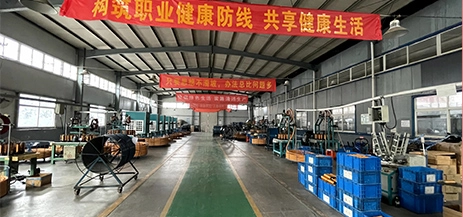Exploring Various Types of Hose Fittings for Automotive Air Conditioning Systems
The Importance of Auto Air Conditioner Hose Fittings
In the world of automotive engineering, maintaining a vehicle's air conditioning system is essential for ensuring driver and passenger comfort, especially during the hot summer months. One critical component of this system is the air conditioner hose fittings. These small yet significant parts play a pivotal role in the overall functionality and efficiency of an automotive air conditioning system.
Understanding Air Conditioner Hose Fittings
Air conditioner hose fittings are specialized components designed to connect various hoses within an automotive air conditioning system. They facilitate the seamless transfer of refrigerant between different parts of the system, including the compressor, condenser, and evaporator. These fittings are typically made from durable materials resistant to corrosion, wear, and high pressure. Commonly used materials include aluminum, brass, and high-grade plastic compounds.
The Role of Hose Fittings in AC Systems
A vehicle's air conditioning system functions on the principles of thermodynamics, and the hose fittings act as the connective tissue that allows for this intricate system to work correctly. Without reliable and efficient hose fittings, the refrigerant could leak, resulting in decreased cooling efficiency or complete system failure. Therefore, they must provide a secure and tight connection to prevent any loss of refrigerant, which is not only essential for performance but also environmentally significant.
Types of Hose Fittings
auto air conditioner hose fittings

There are various types of air conditioning hose fittings, including male and female fittings, straight fittings, and elbows. The choice of fitting depends on the specific configuration and design of the air conditioning system in question. Many modern vehicles utilize quick-connect fittings, which allow for easy assembly and disassembly without specialized tools. This design is particularly beneficial for maintenance and repair, as it reduces the time and effort required to replace hoses or fittings.
Importance of Quality and Compatibility
Using high-quality hose fittings is crucial to the longevity and reliability of an automotive air conditioning system. Cheap or incompatible fittings can result in leaks, premature wear, and ultimately failure of the AC system. It’s essential for vehicle owners and mechanics to ensure that the fittings used are compatible with the specific make and model of the vehicle. This is because different manufacturers may have unique design specifications that require particular types of fittings.
Maintenance and Replacement
Regular maintenance of an automotive air conditioning system should include an inspection of the hose fittings. Over time, fittings can degrade due to factors like wear and tear, exposure to heat, and vibration from the vehicle's operation. Signs of wear may include signs of refrigerant leakage, which can sometimes be indicated by a distinct smell or visual evidence of oil around the fittings. If any issues are found, timely replacement of the fittings can prevent further damage to the entire air conditioning system.
Conclusion
In conclusion, air conditioner hose fittings, while often overlooked, are a vital aspect of automotive air conditioning systems. Their role in ensuring the efficient and reliable transfer of refrigerant cannot be underestimated. By understanding their importance, types, and the necessity for quality and maintenance, vehicle owners can better care for their air conditioning systems, ensuring comfort during those sweltering days. The next time you think about your vehicle's AC performance, remember that it's often the small components like hose fittings that make a significant difference in your driving experience.
-
Ultimate Spiral Protection for Hoses & CablesNewsJun.26,2025
-
The Ultimate Quick-Connect Solutions for Every NeedNewsJun.26,2025
-
SAE J1401 Brake Hose: Reliable Choice for Safe BrakingNewsJun.26,2025
-
Reliable J2064 A/C Hoses for Real-World Cooling NeedsNewsJun.26,2025
-
Heavy-Duty Sewer Jetting Hoses Built to LastNewsJun.26,2025
-
Fix Power Steering Tube Leaks Fast – Durable & Affordable SolutionNewsJun.26,2025

